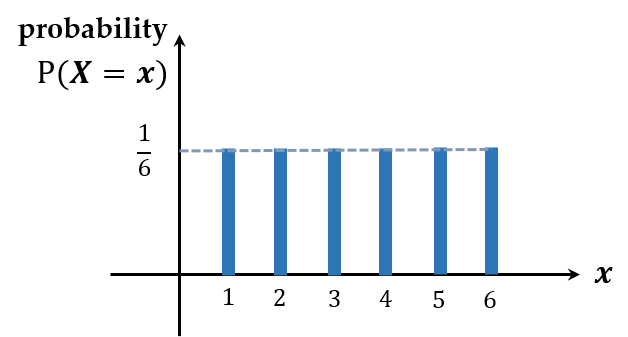Probability and Likelihood
1. Discrete Variables
In the case that random variables have finite values. When the values a random variable can have are , the probability at is which is denoted by for . Moreover, the function which consists of these probabilities is called the probability mass function. For example, when rolling a dice, a random variable is a finite value and . The probability mass function is constant as shown below.

2. Continuous Variables
Consider the situation we select the number in . Unlike the case of rolling a dice, there are infinite numbers in this range, so the probability of picking the number is . Other than this situation, picking the other real numbers has the same probability, . Therefore, it is meaningless that we find the probability when we pick a number in a continuous range, so we should only consider the specific range. For example, when we pick a number in , the probability that the number is in is . This kind of probability functions cannot be represented by the probability mass function, and another probability function which is called the probability density function should be introduced. The area of this function in the specific range represents the probability that the number in this range is picked.

As shown in the figure, the total area must be because it is the sum of all probabilities. Since the probability density function is continuous, the probability, which is the area in this case, can be calculated only in the specific range.
3. Likelihood

As above, the shapes of functions look similar, and the probability at when a random variable is discrete is highest. However, when a random variable is continuous, the probability at is . Although the events near are intuitively most likely happen, the probability is always . This is an awkward situation, so another concept should be introduced which is called likelihood. As shown in the figure above, the likelihood has the different meaning depending on whether a random variable is discrete or continuous. However, it always means the -axis value of the probability mass function or the probability density function. Note that the probability is the likelihood when is discrete, but is not when is continuous.
